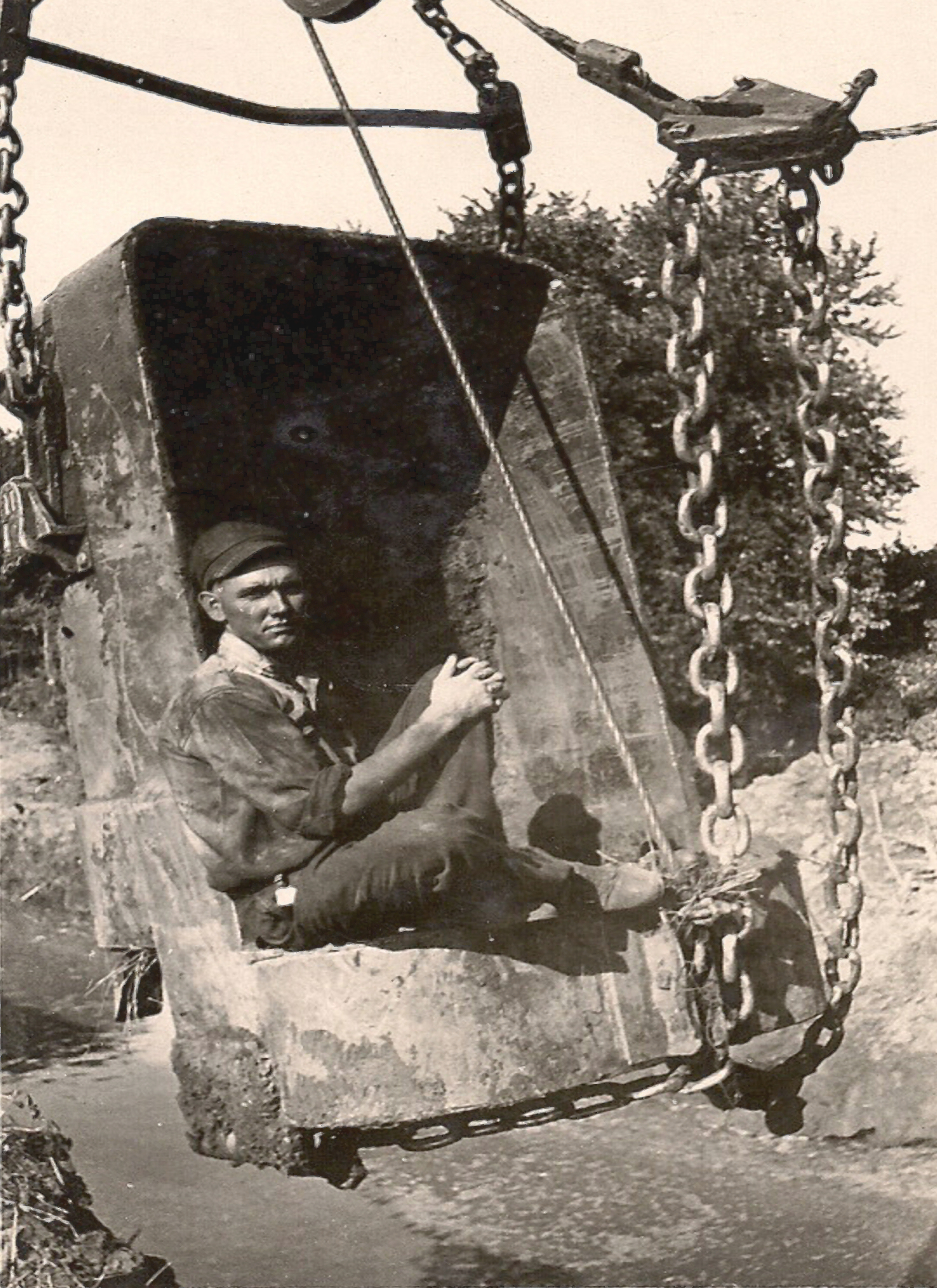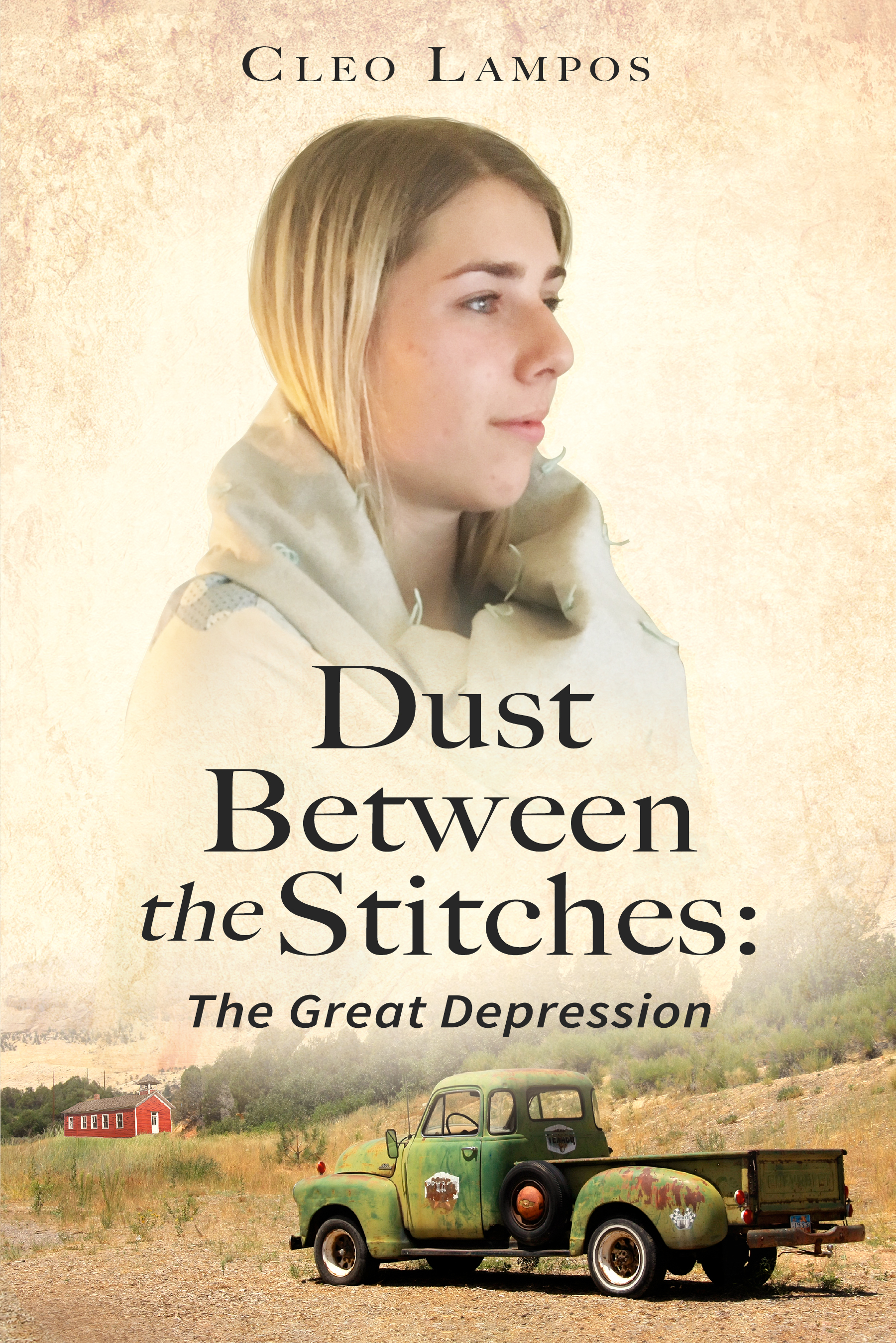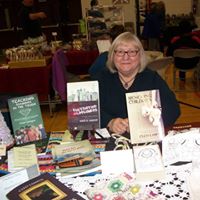Writing the Past: The Dust Bowl
Author Cleo Lampos visits with us today. I marvel at people surviving the Dust Bowl in the thirties, and Cleo’s parents did just that. During that time, people took whatever life gave them and did what they could to make ends meet. And Cleo has made this story from the Dust Bowl into a novel I’m looking forward to reading. She is offering a free book, e- or paperback, to one fortunate commenter. AuthoNow I’ll let her tell the story:
Blame it on the letters.
When my mother passed away, there was not much left of her earthly life. But a box of letters and journals came back to my home on the south side of Chicago. Too grieved to read them, they collected dust in the back of a closet until my age crossed the sixth decade. I decided to delve into my mother’s past.
Born in 1910, the oldest of eight children, Mom grew up on an Iowa farm and married my father in 1930. Just in time for the Great Depression. I can hear her now, saying, “Your father always had a job. We had food.” Times were tough.

My father dug irrigation ditches, spud cellars, or drainage ditches for highways. There are photos of him with his dragline surrounded by curious Lakota Indians. Because his work was location specific, the letters were addressed to 26 different addresses in Wyoming, Colorado and Utah in a five year period. The address to Greeley, Colorado remained for over twenty years because my big brother needed a permanent place to go to school. Many of the letters were those written by my mother to my grandmother as she described her life out West.
It was first hand historical information with a personal appeal. Especially all the entries in the journal in which my mother is making another quilt square. She describes how she obtained the scraps needed to make the square, and the design used. Much fabric was taken from the remnants of the feed bags that she utilized to create aprons, curtains, and pillowcases. My sister guards one of the quilts that she made during this period. Quilting became important to me because it represents the women of this era.
While living in tents, cabin camps and a small wooden trailer hitched behind the dragline, my mom and dad visited Hoovervilles. They bought trinkets created by desperate people etching out bare subsistence. My parents carried their young son to view the mountains, square dance with sheep herders, and hunker in during the Black Blizzards that terrified even the most devout. All of these stories were in the letters and the journals of my mother.
Researching the decade of the 1930s uncovered so much information about the people who would become the Greatest Generation. With this background and my own perspective from living, the historical novel, Dust Between the Stitches,was written. As I penned this work, the emotions of the men and women who faced daily challenges of food, shelter, foreclosure, and destitution forced me to think of how they would respond. Much of what I researched pointed to a generation that held tenaciously to a faith forged from the difficulties of life. It is that solid-rock faith that I hope comes through in my writing.

Bio: Cleo Lampos was born in Greeley, Colorado, but lives on the south side of Chicago. She graduated from the University of Wisconsin-Whitewater and from St. Xavier University-Chicago. After 26 years of teaching behavior disorder/emotionally disturbed students, she is retired with her husband, Vernon. Together they volunteer at the community pantry garden, and are urban farmers on their own city plot. Church and 11 grandchildren fill their lives with activities. Lampos has written numerous magazine articles, and seven books.

Contact Cleo at: FB: Author Cleo Lampos
Website: www.cleolampos.com
E-mail: cleolampos@gmail.com

Wonderful insight into a much-forgotten period. Am adding Between the Stitches to my reading list. Thank you for the wonderful insight into this writer’s family and life behind the words of this book. I can’t help but wonder how today’s generations would fare in such a spartan era as the Great Depression. I wonder, how would I survive such an event. Would my faith be strong enough to survive the storms?
Dear J.D. Wininger,
DUST BETWEEN THE STITCHES is a wonderful way to find how to grasp onto faith in hard times. The Greatest Generation is named correctly. I also wonder if I could have stood at the grave of a child smitten by dust pneumonia and sing “Whispering Hope” or “Will the Circle be Unbroken”.
I too am fascinated by this era. I’ve been working on a manuscript about a dust bowl era orphan who came to live with his uncle and aunt in Iowa after his parents died in Oklahoma. I know I’m going to have to peel some of it off somewhere, but how do you choose when there was so much rich history within those years? And truly what we dub the ‘greatest generation’ was formed by their parents’ generation. So, which one was the greatest generation? Such great stories.
That’s such a good ?, Donevey. How can we ever compare the two?
Donevy, you bring up so many issues. I like the premise of your manuscript. Keep writing it. There is so much history, that a series is in your future. I agree with you about the Greatest Generation. There is a large span of time there. Blessings on your writing.
I have heard stories through the years about the dust bowl years but haven’t read a book detailing what life was like. I look forward to reading Dust Between the Stitches. I also love vintage quilts made when fabrics were limited but the sewing process was probably a source of joy.
Irene, you are just like me. Fascinated by the dust bowl and a lover of vintage quilts. You will find it all in DUST BETWEEN THE STITCHES.
It is all about life in the dust bowl, but the joy of creating quilts. Please write a review after you read this novel. I value your opinion.
I am so grateful to those who kept journals and letters from so long ago. Personal experience is the best way to learn about what life was like in a different era. Quilting was always a big part of my grandmother’s and mother’s lives. I have several that they made during their lifetimes and cherish them. Any time I see a book incorporating quilt making, whether fiction or non-fiction, I get excited! I’m looking forward to reading this book and also learning more about the dust bowl.
Dear Barbara,
I, too, love books that combine historic fiction with quilting. Taking the scraps of life and making beauty from them is the them of these reads, as well as the designs of the quilts. Our parents and grandmothers knew how to slow down and stitch, think through the problems as they hitched a binding, and then snuggled in a warm safe place. A lesson for all of us in a culture of hurry and anxiety.
I’m so anxious to read this book. I’m also recommending it to my daughter’s book club. I know it’s something they’d all enjoy!
Dear Karen,
I would love to hear some of the reactions of the readers. It is such a great way to learn how a book is being perceived. Thank you for recommending it. They will discover history in a way that will make them appreciate their grandparents.